CAA News Today
CAA 2021: A look back on the past year’s programming, publications, and opportunities
posted by CAA — Nov 30, 2021
CAA has produced this reel with a compilation of events, scholarship, programs, and initiatives CAA from the last year. See below for a full list of each item (in order of appearance in the video) with links to learn more.
Programming:
CAA’s first virtual Annual Conference
Mariam Ghani in conversation with Laura Anderson Barbata
In Conversation with Dr. Nancy Odegaard
Theresa Avila, Annual Conference Program Chair in conversation with Meme Omogbai
An Inaugural Evening with CAA Distinguished Awardees and Artists
CAA Then & Now: Reflections on the Centennial Book and the Next Century
Karen Leader, author of Chapter 12: Advocacy
Opportunities:
Publication, travel, and support grants
Publications and Publications Programming:
Artist Project, Elana Mann for Art Journal Open
Roundtable discussion for Art Journal Open, Holding Space…
Art Journal and The Art Bulletin
caa.reviews book and exhibition reviews
caa.reviews’s dissertation roster, 2020
Global Programs
CAA-Getty International Program
CAA-Getty 10-Year International Program online publication
Podcasts
CAA Conversations by CAA’s Education Committee
CAA’s 110th Annual Conference will take place in Chicago from February 17-19, followed by virtual live sessions to be held in Zoom from March 3-5. For more information and to register go to this link.
Meet the 2021 Wyeth Award Winners!
posted by CAA — Nov 18, 2021
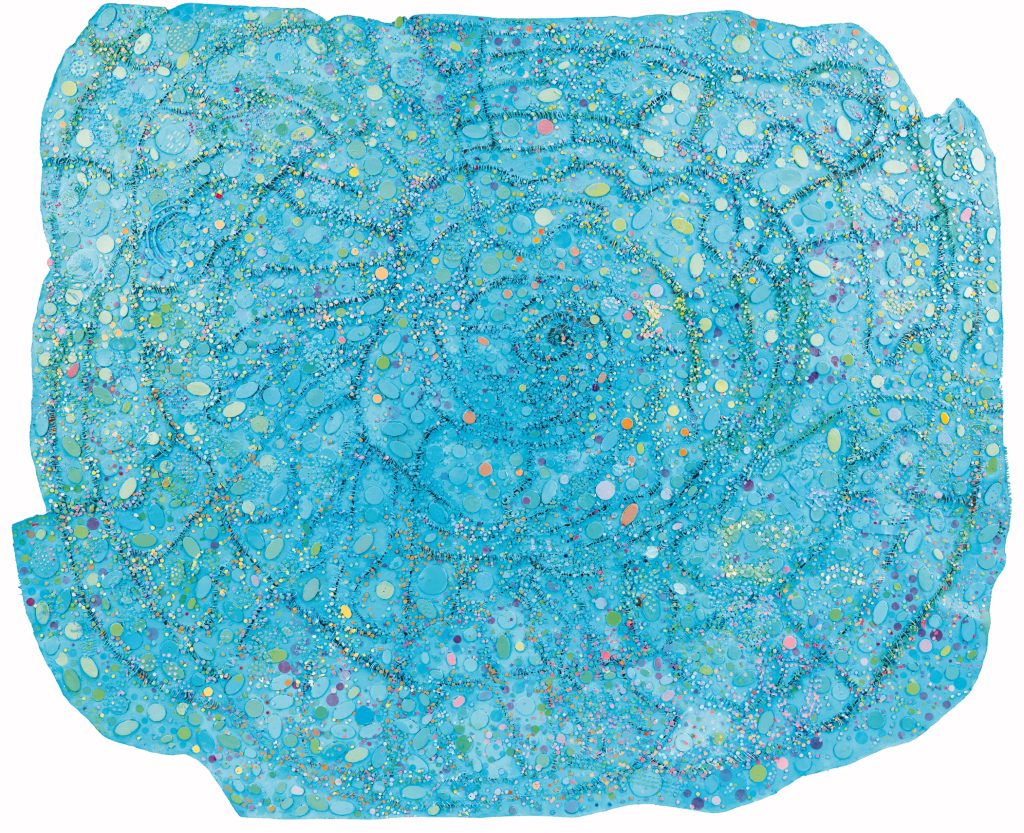
Howardena Pindell, Night Flight, 2015-16, mixed media on canvas, 75 X 63 in. (190.5 X 160 cm) (artwork © Howardena Pindell; photograph provided by Garth Freenan Gallery, New York)
MEET THE GRANTEES
Since 2005, the Wyeth Foundation for American Art has supported the publication of books on American art through the Wyeth Foundation for American Art Publication Grant, administered by CAA. The 2021 grantees are:
- Emilie Boone, A Nimble Arc: James Van Der Zee and Photography, Duke University Press
- Sarah Cowan, Howardena Pindell: Reclaiming Abstraction, Yale University Press
- Elizabeth Hamilton, Charting the Afrofuturist Imaginary in African American Art: The Black Female Fantastic, Taylor & Francis
- Jacqueline Taylor, Amaza Lee Meredith Imagines Herself Modern: Architecture and the Black American Middle Class, The MIT Press
Read a list of all recipients of the Wyeth Foundation for American Art Publication Grant from 2005 to the present.
BACKGROUND
For the Wyeth Foundation for American Art Publication Grant, “American art” is defined as art created in the United States, Canada, and Mexico. Eligible for the grant are book-length scholarly manuscripts in the history of American art, visual studies, and related subjects that have been accepted by a publisher on their merits but cannot be published in the most desirable form without a subsidy. The deadline for the receipt of applications is September 15 of each year.
Guidelines
Process, Materials, and Checklist
CONTACT
Questions? Please contact Cali Buckley, Content Manager, Education and Intellectual Property, at cbuckley@collegeart.org.
CAA Then & Now: Reflections on the Centennial Book and the Next Century
posted by CAA — Nov 15, 2021
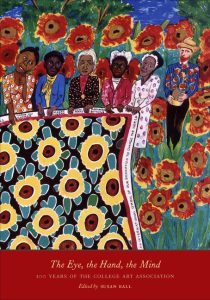
Cover of The Eye, the Hand, the Mind: 100 Years of the College Art Association, edited by Susan Ball (Rutgers, 2011) featuring detail of Faith Ringgold, The Sunflower Quilting Bee at Arles, 1996
On November 4, CAA had the privilege to host the digital event celebrating The Eye, the Hand, the Mind: 100 Years of the College Art Association. If you were unable to make it, please watch this recording of the event.
Published in 2010, this book documents and examines over a century of CAA’s history. The event features Susan Ball, editor of the publication, and author Julia Sienkewicz, who will discuss their contributions to the project and how topics and issues have shifted and changed in the last decade. A conversation between CAA CEO and Executive Director, Meme Omogbai, and art historian, Anne Higonnet, will reflect on these insights and CAA’s plans for the future. This conversation also will honor Robert L. Herbert, the dedicatee of the book, and will discuss how his legacy has impacted the field and so many at CAA.
Following this event, CAA will release a series of short videos from authors discussing their specific chapters within the book, including Julia A. Sienkewicz, Judith Brodsky, Ellen Levy, and Karen Leader. Their presentations will cover a range of topics concerning CAA’s history, from advocacy and feminist initiatives to CAA’s past exhibition programs and conferences.
About the book:
Susan Ball, editor. The Eye, the Hand, the Mind: 100 Years of the College Art Association (Rutgers University Press, 2011). Copies are available for purchase here.
In 1911 the College Art Association began with a small group of college art teachers whose single mission was to promote “art interests in all divisions of American colleges and universities.” One hundred years later the CAA, as it is commonly known, is as diverse as the decades that witnessed its maturity and growth. As leadership and membership grew dynamically, art and art history professors were joined by non-academic visual artists and art historians, museum professionals, art librarians, visual resource curators, independent scholars and artists, collectors, dealers, conservators, and non-college educators.
The Eye, the Hand, the Mind is a collaborative journey, filled with pictorial mementoes and enlivening stories and anecdotes. In these essays readers discover the important role CAA played in major issues in higher education such as curriculum development, preservation of world monuments, workforce issues and market equity, intellectual property and free speech, capturing conflicts and reconciliations inherent among artists and art historians, pedagogical approaches and critical interpretations/interventions as played out in association publications, annual conferences, advocacy efforts, and governance.
Celebrating the centennial of CAA members and milestones, Susan Ball and renowned contributors honor the organization’s complex history which, in part, also represents many learned societies and the humanities over the last one hundred years.
About the speakers:
Susan Ball, Ph.D.: Susan Ball edited The Eye, the Hand, the Mind. Ball holds a Ph.D. in art and architectural history from Yale University and holds over 35 years of professional experience – as a professor, scholar, museum professional and nonprofit agency director. Ball served as Interim Director of Programs at the New York Foundation for the Arts (NYFA). Prior, she was Executive Director at the College Art Association, Professor of Art History at the University of Delaware, the Director of Government and Foundation Affairs at the Art Institute of Chicago, and a consultant with the Shelley and Donald Rubin Foundation. As an author and editor, she has contributed significant works of scholarship in her field, such as The Profitable Artist: A Handbook for All Artists in the Literary, Media, Performing, and Visual Arts with Peter Cobb and Felicity Hogan (Allworth Press, 2011), and has served on many boards.
Julia A. Sienkewicz, PhD: In The Eye, the Hand, the Mind, Sienkewicz authored the chapter, “Uniting the Arts and the Academy: A History of the CAA Annual Conference.” Sienkewicz, an Associate Professor of Art History at Roanoke College, holds both an MA and PhD from the University of Illinois and a BA from Mt. Holyoke College. She is the author of Epic Landscapes: Benjamin Henry Latrobe and the Art of Watercolor (2019). Currently, she is at work on the monograph Forms of White Hegemony: Transnational Sculpture, Racialized Identity, and the Torch of Civilization, 1836-1865, research that has been recognized with the award of a Terra Foundation Fellowship at the American Academy in Rome. She recently edited a special issue of the Art History Pedagogy and Practice journal entitled, “Teaching and Learning the Art History of the United States.” Sienkewicz served in leadership roles at CAA for more than a decade, most recently concluding a term on the Board of Directors as the VP for Committees.
Anne Higonnet, Ph.D.: Anne Higonnet is now Professor of Art History at Barnard College of Columbia University. She received her BA from Harvard College in 1980 and her PhD from Yale University in 1988 under Robert Herbert. Her work has been supported by Getty, Guggenheim, and Social Science Research Council fellowships, as well as by grants from the Mellon, Howard and Kress Foundations. In 2019-2020 she was a Fellow at the Harvard-Radcliffe Institute. She has published many essays, five print books, and two book-scale digital projects, is a prize-winning teacher, and has lectured widely, including in the Live Arts program of the Met Museum. One of her courses, Clothing, is among the most popular at Barnard and Columbia. She is now writing a book under contract with Norton: Three Fashion Stars and the Revolution They Wore; Joséphine Bonaparte, Juliette Récamier, Térésia Tallien.
Meme Omogbai, CAA Executive Director and CEO: Before joining CAA, Omogbai served as a member and past board chair of the New Jersey Historic Trust, one of four landmark entities dedicated to preservation of the state’s historic and cultural heritage, and Montclair State University’s Advisory Board. Named one of 25 Influential Black Women in Business by The Network Journal, Meme has over twenty-five years of experience in corporate, government, higher education, and museum sectors. As the first American of African descent to chair the American Alliance of Museums (AAM), Omogbai led an initiative to rebrand the AAM as a global, inclusive alliance. While COO and trustee, she spearheaded a major transformation in operating performance at the Newark Museum. During her time as deputy assistant chancellor of New Jersey’s Department of Higher Education, Omogbai received legislative acknowledgment and was recognized with the New Jersey Meritorious Service award for her work on college affordability initiatives for families. Omogbai received her MBA from Rutgers University and holds a CPA. She did postgraduate work at Harvard University’s executive management program and has earned the designation of Chartered Global Management Accountant. She studied global museum executive leadership at the J. Paul Getty Trust Museum Leadership Institute, where she also served on the faculty.
In Memoriam: Julie L. Green
posted by CAA — Nov 04, 2021
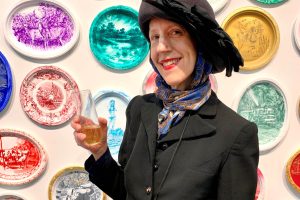
Artist Julie Green in front of one of their pieces in The Armory Show 2020, which included a salon-style presentation of Fashion Plate works, painted on Chinet plates and platters. (Photo by Theo Downes-Le Guin/Upfor Gallery)
Artist and educator Julie Green died at home on Tuesday, October 12, 2021. Green (who preferred gender neutral pronouns) was diagnosed with ovarian cancer nearly two years ago.
Julie Lynn Green was born in 1961 in Yokosuka, Japan to Frederick William (Bill) Green and Jane Green. Green’s birth wasn’t without excitement: their father was airlifted by helicopter off a Navy ship to support Jane during pregnancy complications. Both mother and child were fine. As a child, Green lived in Washington State, Ohio, New Jersey, Illinois, and Iowa, where they attended Des Moines Roosevelt High School, graduating in 1979. From an early age, Green shared their mother’s passion for creative projects, thriving as an artist and performing with a high school mime group. One of Green’s favorite pastimes was to play Scrabble with grandmother “GrandMary.” In 1995, Green married longtime partner Clay Lohmann, who encouraged a lifelong interest in yoga and expanded Green’s artistic pursuits.
Green wrote that they wanted to be a stewardess until age four, but became a painter instead. Green received a B.F.A. and M.F.A. from The University of Kansas, studying with noted artist Roger Shimomura, who remained a lifelong mentor and friend. Green joined the faculty at Oregon State University in Corvallis, Oregon in 2000 as a professor in the Art and Art History Department. While garnering admiration and affection from a generation of students, Green also maintained an active studio practice. Green started their best-known work, a series of paintings on second-hand plates depicting the last meal requests of death row prisoners titled The Last Supper, in 2000. A few weeks before their death, Green decided to end the project at 1,000 plates. The first 800 plates are currently on view at the Bellevue Arts Museum in Bellevue, Washington.
Green worked in a variety of mediums but identified primarily as a painter, often combining humble materials and techniques with art historical traditions. Green painted on linens, Tyvek, and Chinet-brand paper plates as well as paper and canvas, with pigments from sources as diverse as industrial waste byproducts, rare earth elements and 7UP. Awarded a Hallie Ford Fellowship in the Visual Arts from The Ford Family Foundation, Green’s accolades also included grants and fellowships from the Oregon Arts Commission, the ArtPrize 3-D Juried Award, and a Joan Mitchell Foundation Painters and Sculptors Grant. Green’s work was featured in a variety of publications and programs including The New York Times, Rolling Stone, NPR, and PBS, and was exhibited widely in museums and galleries throughout the United States. Green’s final public exhibition in their lifetime, at The Armory Show in New York in 2020, garnered the Presents Award.
Green was preceded in death by their father Frederick WIlliam Green. Green is survived by their husband, artist Clay Lohmann, brother Scott Green, and mother Jane Hamilton.
–Theo Downes-Le Guin and Scott Green
Remembering Rick Asher
posted by CAA — Jul 13, 2021
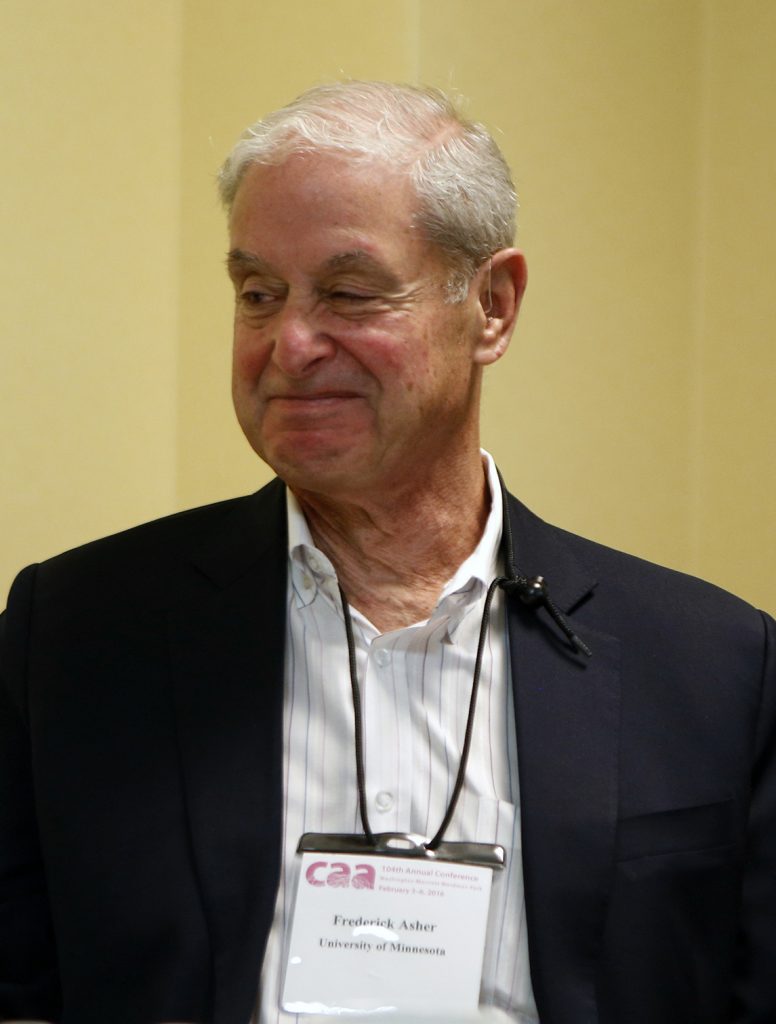
Rick Asher. Photograph by Ben Fractenberg.
Frederick M. Asher, beacon of collegiality and builder of institutions, died on June 26, 2021, having turned 80 just one month earlier. His generosity of spirit guided many scholars through their graduate years and beyond: at the University of Minnesota, where he spent his academic career, and around the world. With Catherine B. Asher, his wife and fellow historian of South Asian art, he led initiatives to document and preserve images of art, archaeological, and architectural objects and sites in India; mentored numerous colleagues and students; and contributed his energies to making academic organizations flourish across the world. He was an early, active member of the American Council for Southern Asian Art (ACSAA); served as president of the American Institute of Indian Studies; and played many roles at CAA, most recently as part of the CAA-Getty International Program where his energies encouraged many of us to reach out across physical and intellectual distances to begin new conversations.
His early research, published in 1980 as The Art of Eastern India, 300–800 (Minnesota), draws connections across the Gupta and Pala eras, thinking deeply about continuities across media—terracotta, bronze, and stone—and across belief systems. His subsequent research led him to study contemporary sculptural practices as a way of understanding the work of unnamed historical sculptors and to a deep engagement with the materiality, crafting, and afterlives of both sculptural objects and the sites where they were worshipped and excavated. His final book, Sarnath: A Critical History of the Place Where Buddhism Began (Getty 2020), published just months before his death, focused on the place where the historical Buddha preached his first sermon, tracing the establishment, excavation, and reimagining of the monastic site from that founding moment to the present. In April, Rick discussed the book with James Cuno for a Getty podcast, giving us a glimpse into his intellectual process and offering many of us a reminder of the rhythms of his class lectures. With his students, Rick always ran toward questions and tantalizing bits of information, wondering at what we don’t know about the past and at the same time marveling at contemporary uses of ancient sculptures and sites. At Sarnath, this meant both the tourists shuttling in from Varanasi with their local guides (guides who almost certainly had met Rick and discussed their mutual love of the site with him) and the international monastic Buddhist communities with pilgrimage centers nearby. Rick cared deeply about his students, and his engaging, dynamic teaching was renowned. He received the University of Minnesota’s Morse-Alumni Undergraduate Teaching Award in 2005–2006, one of his most treasured moments of recognition.
I was incredibly fortunate to visit Sarnath for the first time with Rick and Cathy as part of a trip they organized for the cohort of graduate students in the late 1990s. The trip was exemplary of the Ashers’ generosity and openness—recognizing the hurdles associated with pursuing academic research in India, they sought to pass on their extensive experience by offering us the opportunity to shadow them in their respective projects. Rick had been working with a scientist at the University of Minnesota to ascertain the locations of quarries for various Pala-era (8th–12th century) sculptures by matching stone samples. The project focused on both the materiality and the process of crafting the sculptures—he considered how stone was separated from the earth, how it would have been chosen for a sculpture, and then how it was carefully carved with the detailed iconographies of a Vishnu or a Tara.1 The project’s success relied on his ability to bring people together in a common project: Rick recruited curators and conservators at museums around the world to undertake the delicate process of excising a thin section from the back of these sculptures to compare to the samples he gathered from quarries in Bihar and Bengal. It was this latter piece of the project that he embarked on that summer, taking two of us green graduate students with him into remote areas of Bihar, where we stayed in dak bungalows (remnants of the nineteenth-century postal system) and revisited many of his early research sites from his own graduate days. Rick’s enthusiasm for reconnecting with the people of the region and introducing us to them still resonates with me today, guiding my own fieldwork experiences beyond the inert object to understand the deep interconnections between art, history, and the people who made and continue to interact with the “works of art” we study, works that remain very much alive in the present.
Rick had an incredible gift for open and positive leadership. He hosted ACSAA’s first conference in 1981, and he made sure that the group served as a space of warm, collegial exchange as it grew over the decades. He attended every conference, symposium, workshop, and meeting, seeking out the panels where colleagues and former students were presenting. He would often ask the first question, to draw out commonalities across a diverse panel and also, I came to realize, to facilitate discussion and to give everyone else in the audience time to formulate their own questions. It was primarily at conferences that he would make connections between scholars, a kind of academic matchmaking, if you will. One of the truths of my academic life is that if we have met, Rick probably introduced us. He would stride over, beaming, happy to see you, and then almost immediately say, “there’s someone here you should meet.” Then he would bound off, urging you to follow, to joyfully connect you to a towering senior scholar or newly minted PhD, offering a few choice intellectual threads to solidify the link. Rick understood that the big institutions—CAA prominent among them—only worked because of the dedication of an interconnected group of individuals who recognized their shared commitment to the field. These introductions wove the fabric of these institutions such that when he passed, my email inbox was filled with loving notes and remembrances from colleagues around the world—his colleagues, and also, because of him, my colleagues.
Rick, whose intellectual pursuits focused on the material connections between works of art and people and who cared deeply for makers of objects and sites and the ways in which places and people shaped one another over time, thus continues to connect us even at the moment of his passing. His own post-history has yet to be written, but I have a strong feeling that his energy and presence will be with us at each future academic meeting, in each future encounter. So wonderful to see you! Come, there’s someone here you should meet.
–Rebecca M. Brown, Johns Hopkins University
Meet the Spring 2021 Millard Meiss Publication Fund Grant Recipients
posted by CAA — Jun 24, 2021

Mbanza Kongo (São Salvador), capital of the Kingdom of Kongo, mid-18th century
MEET THE GRANTEES
Twice a year, CAA awards grants through the Millard Meiss Publication Fund to support book-length scholarly manuscripts in the history of art, visual studies, and related subjects that have been accepted by a publisher on their merits, but cannot be published in the most desirable form without a subsidy.
Thanks to the generous bequest of the late Prof. Millard Meiss, CAA began awarding these publishing grants in 1975.
Spring 2021 Grantees
Annette de Stecher, Wendat Women’s Art, McGill-Queen’s University Press
Sylvia Houghteling, The Art of Cloth in Mughal India, Princeton University Press
Pamela Karimi, Alternative Iran: Radical Spatial Strategies in Contemporary Art Practice, Stanford University Press
Meredith Martin and Gillian Weiss, The Sun King at Sea: Maritime Art and Galley Slavery in Louis XIV’s France, Getty Research Institute
Ying-Chen Peng, Artful Subversion: Empress Dowager Cixi’s Image Making in Art, Yale University Press
Yael Rice, Agents of Insight: Artists, Books, and Painting in Mughal South Asia, University of Washington Press
Sarah-Neel Smith, Metrics of Modernity: Art and Development in Postwar Turkey, University of California Press
Bert Winther-Tamaki, Tsuchi: An Environmental History of Contemporary Japanese Art, University of Minnesota Press
Announcing the 2021 Terra Publication Grant Winners
posted by Allison Walters — Apr 26, 2021
CAA is pleased to announce the 2021 recipients of the Terra Foundation for American Art International Publication Grant.

This program, which provides financial support for the publication of book-length scholarly manuscripts in the history of American art, is made possible by a generous grant from the Terra Foundation for American Art.
The nine Terra Foundation grantees for 2021 are:
Julie Ault, ed., Hidden in Plain Sight: Selected Writings on Asian American Art by Karen Higa, Dancing Foxes Press
Melissa Dabakis and Paul Kaplan, eds., Republics and Empires: Italian and American Art in Transnational Perspective, 1840-1970, Manchester University Press
Alice Dusapin, Wolfgang Stoerchle: Success in Failure, octopus/Christophe Daviet-Thery
Richard Hertz, Jack Goldstein and the CalArts Mafia, Les presses du réel, translation from English to French
Amy Von Lintel and Bonnie Roos, Expanding Abstract Expressionism: Women Artists and the Middle American West, Texas A&M University Press
Margaretta Markle Lovell, Painting the Inhabited Landscape: Fitz H. Lane and The Global Reach of Antebellum New England, The Pennsylvania State University Press
Friederike Schaefer, Claiming Space(s). Locating Suzanne Harris’ Dance Practice and Ephemeral Installations within New York City in the 1970s, De Gruyter
The International Author Conference Subventions confer two non-US authors of top-ranked books travel funds and complimentary registration to attend CAA’s 2022 Annual Conference in Chicago, February 16-19; they also received one-year CAA memberships.
The two author awardees for 2021 are:
- Alice Dusapin
- Friederike Schaefer
LEARN MORE ABOUT THE TERRA PUBLICATION GRANT
CAA at 2021 Advocacy Days
posted by CAA — Apr 16, 2021
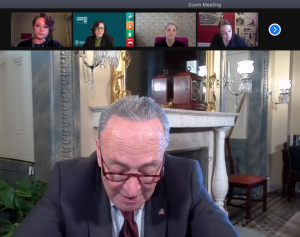
Screenshot of CAA in virtual conversation with NY Senator Chuck Schumer, 2021
CAA representatives advocated for the arts and humanities with partners at the American Association of Museums (AAM) and the National Humanities Alliance (NHA) this spring for Museums Advocacy Day on February 23 and Humanities Advocacy Day on March 11, 2021. Alongside other academic societies, scholars, and museum professionals, CAA urged congressional representatives and senators to back full funding for the National Endowment for the Arts (NEA), the National Endowment for the Humanities (NEH) and particularly the Institute for Museum and Library Services (IMLS), which provides grants for museums and arts organizations throughout the country, for the fiscal year 2022. Increased allocations for these programs would bring funding levels back to what they were over a decade ago in 1998. We met with the offices of New York representatives Tom Reed, Jerry Nadler, Carolyn Maloney, John Katko, and Yvette Clarke and senators Kirsten Gillibrand and Chuck Schumer. Sen. Schumer joined Museums Advocacy Day in person to share his enthusiasm about moving forward with emergency relief funds for arts organizations and supporting more space for them in the next year’s congressional budget.
CAA has been participating in these meetings for the past three years. We noted that 1/3 of all museums in the US are at risk of closing without assistance. We also stressed the importance of museums as institutions that have served our community greatly during COVID and have come up with creative solutions for childhood education, community building, virtual exhibitions, and out-of-the-box engagement strategies. The arts and humanities have helped our communities cope and their spaces—schools, libraries, and museums—remain some of the only spaces in communities that can be accessed freely by the public.
Announcing CAA 2021 Annual Conference Support Grantees
posted by Allison Walters — Feb 17, 2021
CAA offers Annual Conference grants supporting international members, students, emerging scholars, practitioners, and artists. This year, we offered support grants to attend the 109th Annual Conference, February 10-13, 2021, virtually.
ANNUAL CONFERENCE CAA MEMBER SUPPORT GRANTS
CAA has awarded a limited number of grants to international members, students, emerging scholars, practitioners, and artists who are CAA members participating in the conference to support their ability to take part in the Annual Conference.
2021 Annual Conference Support Grantees:
- Kristina Davis
- Silas E. Fischer
- Maria Garth
- Keith D. Lee
- Mai Yamaguchi
- Xiaojing Yan
SUPPORT GRANTS FOR ANNUAL CONFERENCE REGISTRATION
CAA has awarded a limited number of grants to cover Annual Conference Registration for CAA 2021 to members in need. Annual Conference registration grants are supported by funds raised by the Presidents Council of CAA and the “Pay it Forward” initiative.
2021 Annual Conference Registration Support CAA Student Member Grantees:
- Nicole Cochrane
- Sophia Maxine Farmer
- Alexa McCarthy
- Andrea Morgan
- Lauren Rosenblum
- Sheri Michelle Schrader
- Christine Suzanne Slobogin
- Mariya Tsaneva
2021 Annual Conference Registration Support CAA Member Grantees:
- Chava Krivchenia
- Claudia Marion Stemberger
- Daniela Naomi Molnar
- Dell Marie Hamilton
- Hong Zeng
- Jasmine Graf
- Roma Madan Soni
- Silvia Massa
- Tania Gutierrez-Monroy
ROYAL TALENS NORTH AMERICA – CAA CONFERENCE REGISTRATION GRANTS
For more than 100 years, Royal Talens has been stimulating creative expression by developing high-quality brands and products that inspire artists throughout the world. We seek to initiate and support efforts to increase cultural equity and inclusion in the arts community. We would like to announce the newly created Royal Talens CAA Cultural Equity Grant to provide support for studio art educators of color residing in the US or Canada to attend the national conference in 2021.
2021 Royal Talens North America – CAA Annual Conference Registration Grantees:
- Massa Lemu, Assistant Prof at Virginia Commonwealth University
- Lizzy Martinez, Instructor at University of Missouri St. Louis
- Kirk Maynard, Adjunct Instructor at Drew University, Madison NJ
Announcing the 2021 Awards for Distinction Recipients
posted by Allison Walters — Feb 10, 2021
Honorees this year include Samella Lewis, Deborah Willis, Kenneth Frampton, and many other scholars, artists, and teachers, including special commendation for service to art historical scholarship to Gillian Malpass.
CAA Annual Conference, February 10-13, 2021
We are pleased to announce the recipients and finalists of the 2021 CAA Awards for Distinction. Among the winners this year is Samella Lewis, recipient of the 2021 Distinguished Artist Award for Lifetime Achievement. She was the first African American to earn a PhD in art history at Ohio State University. Mentored by Elizabeth Catlett and Charles White, Lewis embodied the visual culture of the civil rights movement through her prints. In addition to her studio practice, Lewis advocated African American art by writing for and creating exhibition venues. Her book, African American Art and Artists, originally published in 1978, was updated in subsequent editions and remains an important examination of more than two centuries of Black art and artists in the United States. For decades Lewis was a committed educator and scholar. In addition to her Fulbright, Lewis has been honored with a Charles White Lifetime Award (1993), with a UNICEF Award for the Visual Arts (1995), by being named a Getty Distinguished Scholar (1997), and by being interviewed by the HistoryMakers Archives (2003).

Deb Willis
and
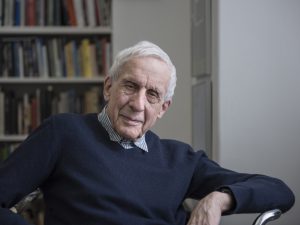
Kenneth Frampton Photo credit: Alex Fradkin
Deborah Willis and Kenneth Frampton are the recipients of the 2021 Distinguished Lifetime Achievement Award for Writing on Art.
Deborah Willis has opened the field of African American photography. When the invention of photography coincided with the promise of abolition, a new arc of aspiration was combined. Its new pictures, thought to be the work of light itself, began to transmit images so that, as Frederick Douglass said, “Men of all conditions may see themselves as others see them.” From the first, photographs and photographic studios proliferated inside the Black community. It is the true extent of this practice that has been revealed by the lifework of Deborah Willis. In effect she has acted as its archaeologist, sifting through the layers from the time of Louis Daguerre to the surface of our present, retrieving the images and researching their histories.
Kenneth Frampton, trained as an architect, is a prolific architectural historian and critic who has managed to face the behemoth of globalized capital with an enduring version of humane modernity. Frampton has been writing about architecture for over half a century. A model of the architect-scholar, Frampton not only opens new cosmopolitan perspectives on the work of widely influential architects from Le Corbusier and Louis Kahn to Zaha Hadid and Álvaro Siza Vieira with his scholarship but also gives due attention to transitional spaces and movements.
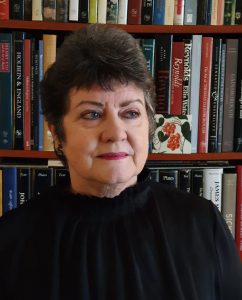
Gillian Malpass
Gillian Malpass is the recipient of a CAA Commendation for Service to Art Historical Scholarship. As publisher of art and architectural history at Yale University Press, London, Gillian Malpass assembled a matchless list of titles over three decades that set the press apart from all others. She fostered projects that were gorgeously designed, accessibly written, and beautifully illustrated, including numerous now-classic books by both emerging and senior scholars. She worked on monographs, exhibition catalogs, reference, and biography, from books examining previously unexplored fields to bestsellers. Authors of many of the most important books published in art history over the past thirty years attest in their prefaces to the ways in which Malpass’s encouragement, expertise, and eye shaped their work.
The Awards for Distinction will be presented during Convocation at the CAA Annual Conference on Wednesday, February 10 at 6:00 PM. This event is free and open to the public. A free and open registration is required.
The full list of 2021 CAA Awards for Distinction Recipients:

Sampada Aranke
Sampada Aranke, “Blackouts and Other Visual Escapes,” Art Journal, vol. 79, no. 4 (Winter 2020): 62–75

Katherine A. Bussard
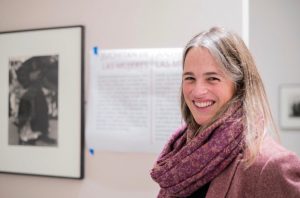
Kristen Gresh Photo credit: Oswaldo Ruiz
Katherine A. Bussard and Kristen Gresh, eds., “Life” Magazine and the Power of Photography, Princeton University Art Museum, 2020
and
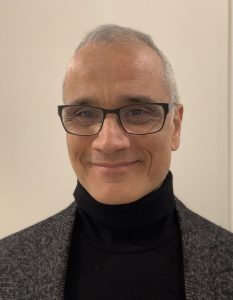
Louis Marchesano
Louis Marchesano, ed., Käthe Kollwitz: Prints, Process, Politics, Getty Research Institute, 2020
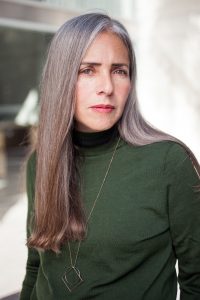
Julieta Gonzalez

Tomás Toledo

Adriano Pedrosa

José Esparza Chong Cuy
Alfred H. Barr Jr. Award for Smaller Museums, Libraries, Collections, and Exhibitions
Adriano Pedrosa, José Esparza Chong Cuy, Julieta González, and Tomás Toledo, Lina Bo Bardi: Habitat, Museu de Arte de São Paulo Assis Chateaubriand (MASP) / DelMonico Books, 2020
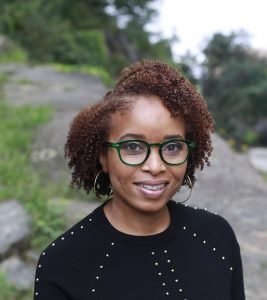
Nicole R. Fleetwood Photo credit: Bayeté Ross Smith
Nicole R. Fleetwood, Marking Time: Art in the Age of Mass Incarceration, Harvard University Press, 2020
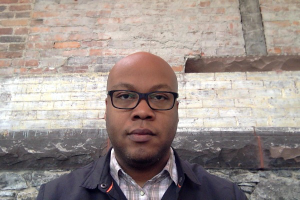
Charles L. Davis, II
Charles Rufus Morey Book Award
Charles L. Davis, II, Building Character: The Racial Politics of Modern Architectural Style, University of Pittsburgh Press, 2019
and

Nicole R. Fleetwood Photo credit: Bayeté Ross Smith
Nicole R. Fleetwood, Marking Time: Art in the Age of Mass Incarceration, Harvard University Press, 2020

Adam Jasienski
Adam Jasienski, “Converting Portraits: Repainting as Art Making in the Early Modern Hispanic World,” The Art Bulletin, vol. 102, no. 1 (March 2020): 7–30
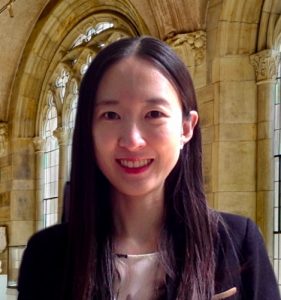
Jessie Park
Honorable Mention:
Jessie Park, “Made by Migrants: Southeast Asian Ivories for Local and Global Markets, ca. 1590–1640,” The Art Bulletin, vol. 102, no. 4 (December 2020): 66–89
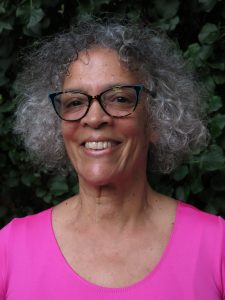
Maren Hassinger Photo credit: Ava Hassinger
Artist Award for a Distinguished Body of Work
Maren Hassinger
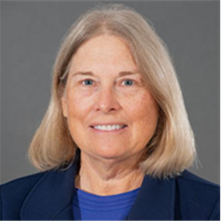
Nancy Odegaard
CAA/AIC Award for Distinction in Scholarship and Conservation
Nancy Odegaard
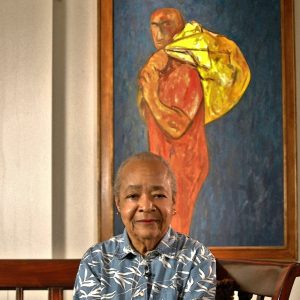
Samella Lewis
Distinguished Artist Award for Lifetime Achievement
Samella Lewis

Deb Willis
and
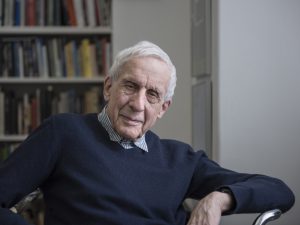
Kenneth Frampton Photo credit: Alex Fradkin
Distinguished Lifetime Achievement Award for Writing on Art
Deborah Willis and Kenneth Frampton
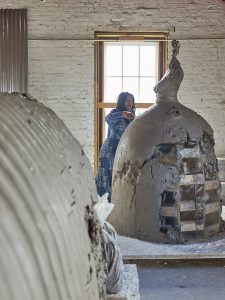
Simone Leigh Photo credit: Kyle Kodel
Distinguished Feminist Award—Artist
Simone Leigh

Katy Deepwell
Distinguished Feminist Award—Scholar
Katy Deepwell
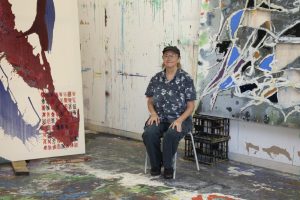
Dona Nelson
Distinguished Teaching of Art Award
Dona Nelson
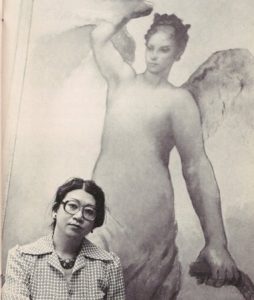
Kaori Kitao
Distinguished Teaching of Art History Award
Kaori Kitao
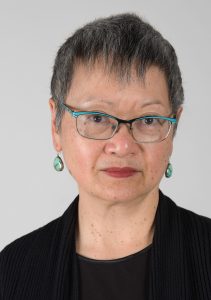
Margo Machida
Margo Machida

Gillian Malpass
CAA Commendation for Service to Art Historical Scholarship
Gillian Malpass
Learn about the juries that select the recipients of the CAA Awards for Distinction.


